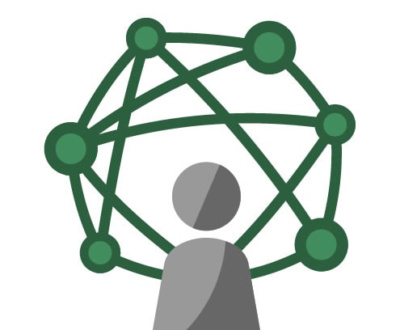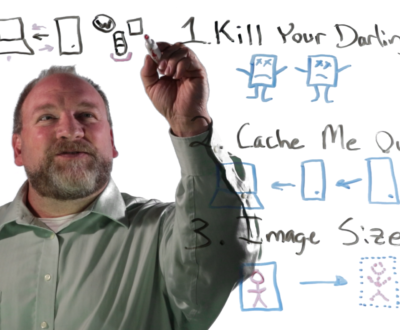Do You Possess These 4 Web Design Super Powers? You better…..
- March 20, 2017
- Lists, Website Design, WordPress Web Design
Being a great web designer takes an extraordinary amount of skill, combined with just the right temperament for the job. Some of the superpowers you will need as a web designer can be acquired on the job; must be acquired that way, in fact, while other abilities you must be born with, or at least have a radioactive bug bite instill them in you…
If you were to interview a host of specialists, you would undoubtedly get many different answers about what it takes to be a great web designer, but here are four of the superpowers we feel are essential.
Multi-tasking
It will be a very rare development gig that can focus on one project at a time, start to finish. Most of us are going to have 3 or 4 development projects going at the same time. This happens for a number of reasons, from overlapping sales to lagging clients, but even if you try to plan out your development cycles so they don’t overlap, this is simply unrealistic in practice.
So that’s one layer: you will likely have multiple projects going in parallel. Project A is waiting for photos, Project B is waiting for client feedback on some design tweaks you made, Project C is waiting on you! When is the contact page going to be done? Project D was finished months ago, but now they have a small problem they need your help with…
But the secondary layer is the multiple tasks you have to manage in parallel on a daily basis even within one project! You have to create content to know how to build our your menu, you have to install plugins, sometimes in the middle of content creation, which takes you down a rabbit hole of additional steps. Suddenly you are staring blankly at a completed interruption…”what was I doing before that happened? oh!”…and back into action.
In website creation, you will never have the luxury of creating one element at a time, serially. In reality you will be checking layouts on your own phone in order to best tweak the layout CSS while waiting for client images to download from Dropbox in order to finish the portfolio, in order to create a portfolio page, in order to know what the link will be to the portfolio page in order to finish the navigation menu, in order to know how wide the navigation bar CSS needs to be set at, in order to render well at various screen sizes on your own phone…
You get the idea.
In short, lots of multi-tasking. You must have focus and flexibility to thrive in the chaos of website creation and marketing.
Know Your WordPress!
These days, WordPress rules the roost on the Internet, powering at least 25% of all websites in existence. WordPress has achieved this popularity because it manages content so well, and allows amazing designs to be stood up quickly. Today’s websites are all about content quality and responsiveness at mobile screen sizes. WordPress makes it quick and reasonably easy to build a world-class website in the open-source realm.
However, WordPress does have it’s quirks and it’s critical that you understand the importance of security and regularly patching the WordPress core and plugins. WordPress sometimes gets a bad reputation because it’s a popular target for ne’er do wells online trying to hack or take down web servers.
This is only true on neglected WordPress sites. The WordPress open-source community does an amazing job policing and patching their own vulnerabilities usually long before any hacker catches wind of it. But you have to have that patch. Neglected sites are always very vulnerable in this way.
WordPress also isn’t perfect out of the box when it comes to search engine readiness. You will want to manage everything about your websites SEO, including URL structure, category hierarchy, page load speeds and more, but you will usually need to change the default WordPress configuration or even install plugins to extend functionality in the way you need.
Manifest whole things out of no things
This one sounds a bit esoteric, but anyone who has done this job for a while will get what I mean here. It can be hard to pin down a client on a strategy, or what they don’t like about a design, or even what they want out of their web presence. Veteran web designers know you are always navigating ambiguity, solidifying nebulous ideas into actual web content or design elements.
One of the easiest ways to ensure you will solidify everyone’s ideas into something concrete is to take the plans and create a first draft you can share and about which you can collect feedback. This may seem obvious, but it took me years to understand that talking through a design will not effectively communicate the design. Period. You have to show them something. You should plan on working quickly, with many small iterations to tweak or refine what you are doing. No amount of planning can eliminate the need for multiple drafts, so your focus should be on giving your client things to review and critique. This can be painful and time-consuming, and only experience will start to mold how you get this process to work.
An essential element of this is communication, and specifically not letting your client “off the hook” when they are being wishy washy about feedback. Don’t be afraid to push back and demand actionable feedback. This is the only way to get from ambiguity to completed website.
Examples of non-actionable feedback would be:
“It just doesn’t feel right”
“I want my design to be more fun”
“It’s too much color!”
Can we do anything with these? Maybe, but you will be guessing a great deal and will likely guess wrong from time to time, adding more iterations. Instead, more actionable versions of these statements give us a clear direction:
“I think the layout is cramped – to much vertical scrolling, but too narrow width just doesn’t feel right”
“Can we place our cartoon characters peaking around some boxes on the page to make it more fun?”
“It’s too much color – can we just try with the burnt orange, green and grey?”
The final outcome of this ambiguous journey will hopefully be clients wishes made manifest, without requiring hundreds of hours of rework.
Holistic view of marketing, design, user-interfaces, and technical limits
This is a true superpower, in the sense that it combines an understanding of several different disciplines, all of which impact how a website appears, how it functions, and how it effectively expresses the intent of its owner. Many really good web designers have a thorough knowledge of design and technical limitations of coding and scripting, but don’t think too much about UI or marketing the website after it’s built.
But marketing a website once it’s built is now the only path to success. And if you haven’t considered the audience and how the experience works for them in the interface, you are missing a key element once they actually get to your site in the first place.
Then suddenly a plugin doesn’t work because your web server isn’t configured to handle the script language called for. If you don’t have a team of people, you are likely doing your own IT as well.
The point here is that a great developer knows how many hats he or she has to wear, and leaves nothing to chance or forgets critical steps in standing up a new website. A holistic view often makes you better at the individual pieces, as you start to see how one element in the design process might effect other things downstream.
So what do you think? Some of these truly do seem to be super-powers, eh? Do you possess enough of these powers to succeed as a web designer, web developer, and web marketer?
Bill lives and plays in Fort Collins, Colorado. After a fulfilling career for a Fortune 50 company, Bill founded Colorado Web Design in 2012 with a passion for creative digital solutions for business. Bill likes to manage a wide variety of projects and tasks for his clients in the digital space. The creative elements of website design, application design, and marketing are enough to keep anyone busy and engaged, but wiping the slate clean over and over at the start of new projects comes with its own challenges. "I like to start with really good client communication sessions. The rest is easy if you get started in the right way." He plays tennis, bikes, and hikes and then undoes all of that with too much delicious food and TV watching.
About Colorado Web Design
We've been building websites for Colorado businesses since 2002. We are a small team of dedicated individuals who love the challenge of each new marketing project. We live and play in northern Colorado.












